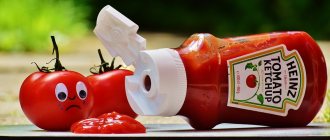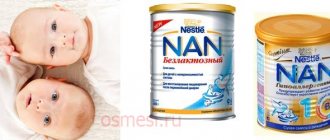Gluten-free products have become popular on store shelves today. The relevance of gluten-free diets forces manufacturers to sell what consumers demand. Although the absence of gluten does not mean that the product is “healthy”. Often these buzzwords are used to really promote products. And this brings us to why it is so important to know whether those “gluten-free grains” that you are searching for and then purchasing are actually gluten-free and healthy.
What is gluten
This is a protein found in wheat, as well as in other grains - spelt, barley, rye. It helps to “glue” and shape foods, giving them elasticity. Gluten causes unpleasant intestinal symptoms for some people. Approximately 1-2% of the world's population suffers from celiac disease. This is an autoimmune form of gluten intolerance. These people have serious difficulties and must follow a gluten-free diet for life. There are others who do not have celiac disease but may have an allergy related to wheat consumption. Experts say 1-6% of the population falls into this category.
Thus, if you have any gluten intolerance, it is better to replace whole wheat with gluten-free grains, a list of which you will find in the article.
Is there gluten in bran?
Bran is the outer shell of grain that is removed when it is ground into flour. The higher its grade, the more of this by-product is obtained. In nutrition, bran is valued for its high fiber content of 40-45%. But they also have a lot of protein. Accordingly, if bran is obtained from a crop that contains gluten, then the allergenic protein will be present in it. For example, wheat flour contains 11-12% protein, and its shells contain 16-17% protein, i.e. There will be even more gluten in the bran. Therefore, for people with celiac disease:
- Wheat, rye and barley additives are contraindicated;
- It is permissible to consume oatmeal with caution and only if it is marked gluten free;
- You can safely buy corn, buckwheat, rice, amaranth, and flax bran.
You should be especially attentive to mixtures from different cultures. The fact is that the most wheat flour is produced, therefore a lot of bran is formed from this crop. This is the most widely represented type of them on sale.
If you are intolerant to gluten, you need to eliminate wheat, rye and barley products from your diet, and be careful about oatmeal products. It just seems complicated. Gluten-free cereals are not just one or two names, they are a whole world of grains with different colors and tastes. What are your favorite gluten-free cereals? Write in the comments and share your recipes.
Top 3 cereals that contain gluten
Wheat is commonly found in foods such as:
- bread
- bakery
- soups
- pasta
- flakes
- sauces
- salad dressings
- gravy
Barley is commonly found in foods:
- malt (malted barley flour, malted milk and milkshakes, malt extract, malt syrup, malt flavoring, malt vinegar)
- food coloring
- soups
- beer
- Brewer's yeast
- cereals (barley, barley, pearl barley)
Rye is commonly found in foods:
- Rye bread
- rye beer
- flakes
Cereals without gluten or cereals with gluten – what to choose
So, with all this gluten-free buzz that has been around for quite some time, what does our body need? It's clear that if you have celiac disease or gluten intolerance, you should stay away from the sticky protein. However, for many, gluten is just a buzzword, and eliminating it from your diet may cause you to miss out on the benefits of many whole grains.
Some benefits of gluten include a lower risk of developing:
- stroke,
- type 2 diabetes,
- heart diseases,
- asthma,
- colorectal cancer,
- inflammatory diseases
- gum diseases.
Gluten also promotes greater satiety and healthy weight maintenance.
Whole grains, especially when properly produced and without harsh chemicals, can contain vitamins and minerals such as B6, E, niacin, pantothenic acid, riboflavin, thiamine, folate, calcium, iron, magnesium, zinc, copper, selenium and potassium. fiber, protein, antioxidants, healthy phytonutrients and healthy fats. If you don't have problems digesting gluten, you don't need to avoid it!
The benefits of gluten-free cereals
Help reduce symptoms of irritable bowel syndrome
Irritable bowel syndrome (IBS) is defined by recurrent abdominal pain or discomfort, diarrhea and/or constipation.
Gluten is one of the possible reasons for the worsening of this syndrome. Research has shown that simply eliminating gluten from your diet can solve your IBS problem. Often patients are asked to follow a diet low in food products and eliminate gluten. This is the basis of the diet for the treatment of IBS (5).
Can help children with autism
This may seem dubious to some. However, there is evidence that a gluten-free diet affects behavior, social interaction and learning in children with autism. More research appears to be needed, but reports suggest that a gluten-free diet combined with a casein-free diet is beneficial for children with autism (7, 8).
Can give you energy
Gluten often makes people feel tired and lethargic. For those who are sensitive to gluten, this may interfere with proper absorption of nutrients. Which, in turn, prevents the brain, nervous system and organs from receiving the necessary nutrition. Lack of nutrition can lead to feelings of fatigue. If you're sensitive to gluten, cutting it out can revitalize your energy levels (9).
May prevent bloating
Bloating is one of the most common symptoms of gluten sensitivity. This is usually defined as pressure inside the abdomen or excess gas. Bloating is often associated with functional gastrointestinal disorders such as irritable bowel syndrome. Eliminating gluten from your diet may provide relief.
A study was conducted on 486 patients with suspected gluten sensitivity over a one-year period. The following symptoms have been noted: abdominal pain, bloating, diarrhea and/or constipation, nausea, epigastric pain, gastroesophageal reflux, aphthous stomatitis, fatigue, headache, fibromyalgia, similar joint/muscle pain, numbness of the legs or arms, brain fog, dermatitis or skin rash, depression, anxiety and anemia.
For most patients, the length of time between gluten ingestion and the onset of symptoms varied. The most common comorbid disorders were irritable bowel syndrome (47%), food intolerance (35%), and IgE-mediated allergy (22%). Concomitant autoimmune disease was found in 14% of cases (10, 11)
When replacing gluten grains with gluten-free grains, the list of which you could see in our article, the negative symptoms decreased.
Feeding gluten cereals: when to introduce them, how to prepare them, rating of the best cereals
Porridge is the product of the first main complementary food. Many people know that there are cereals containing gluten. But only some parents know what danger this substance can pose to their baby. When can you offer your child gluten porridge and which cereal is best to choose for complementary feeding? We will try to answer these questions in this article.
What is gluten?
Before you figure out which cereals are gluten-free, you need to learn more about the consequences that their consumption may entail.
Gluten or gluten is a special protein of cereal crops. It is he who is responsible for such properties of cereal as ductility, elasticity and stickiness. Present in all cereals that can be offered to a child as complementary foods, except rice, buckwheat and corn.
One of the main components of plant protein is gliadin. It is he who has a damaging effect on the epithelium of the small intestine. The mechanism of this effect is not completely clear, but the exact connection between intestinal damage and gluten is beyond doubt.
Gliadin binds to cells of the intestinal mucosa, lymphocytes and other immunocompetent cells. This causes destruction of the epithelial lining with the development of areas of atrophy - gluten enteropathy develops. With the complete elimination of gluten-containing foods, the intestines gradually recover.
The main symptoms to determine gluten intolerance are as follows:
- Decreased appetite;
- Slowing down the rate of weight gain;
- Moodiness, aggression, sleep disturbances;
- Increased abdominal circumference due to weight loss;
- Liquid, fatty, copious stools;
- Decreased muscle tone;
- Loss of previously acquired skills;
- Edema;
- Anemia, increased bleeding;
- Pathological fractures that occur for no particular reason;
- Hair loss, dry and brittle nails;
- Convulsive syndrome.
Symptoms of intolerance do not appear immediately, but after a couple of months. The disease usually manifests itself at 6-8 months. This disease is hereditary and does not occur in all children.
Which gluten porridge to choose for the first feeding?
As it turned out, gluten porridge is not suitable for first feeding. Cereals containing gluten are introduced only after cereals that do not contain it.
It is better to start introducing gluten porridges with oatmeal or wheat. These cereals are very nutritious and have an optimal composition of macro- and microelements. The mucous structure of oatmeal gently envelops the walls of the gastrointestinal tract, protecting it from the effects of harmful substances.
For a long time in the past, the most popular cereal that was introduced first was semolina. But scientific research shows that it is not as rich in important nutrients as other grains and contains high amounts of gluten. It is better to offer it to your baby closer to the age of one year.
gluten cereals for complementary feeding
When choosing porridge for their baby, parents strive to choose the most delicious and healthy one offered. It’s not difficult to prepare porridge at home, but it’s safer to start with industrially produced products.
- Heinz is a major manufacturer of baby food. The line of gluten-containing porridges includes monocomponent compositions (oatmeal and wheat) and multigrain compositions with various fruit and berry additives, with and without milk. Also interesting are the Lakomaya and Lyubopyshka series of porridges, as well as vegetable ones.
- Bebi is a premium class porridge, distinguished by a wide range and high quality. There are porridges consisting of one cereal, 3, 5, 7 grains, with and without milk, containing fruit and berry additives. There is a series of night porridges made with goat milk.
- Nestle is a well-known baby food brand. It produces several types of dairy-free and dairy gluten porridges, single- and multi-component, with and without additives. There is a series of Pomogaika porridges.
- Frutonyanya is a popular Russian manufacturer of baby food. It has a fairly good selection of different porridges. Liquid porridges, ready to eat after heating, deserve special attention.
- Malyutka - children's porridge from the Nutricia company. Manufactured to international standards. A small number of types of cereals are produced compared to competitors. Nevertheless, many mothers choose porridge from this company due to its good organoleptic properties, lack of salt and reasonable price.
When choosing gluten porridge for your baby, you need to clearly know whether the child is ready for such food. The modern food industry provides a huge selection of various children's products. Thanks to this, every parent can choose for their baby what is right for them.
Valentina Ignasheva, pediatrician, especially for Mirmam.pro
Source: https://mirmam.pro/glyutenovye-kashi
Precautions when consuming gluten-free cereals
It is important to find out if you have celiac disease or sensitivity if you suspect you have a problem with gluten. There are tests your GP or dietitian can carry out to make sure you are gluten intolerant. Pay special attention to any allergic reactions that may occur from eating any gluten-containing foods.
As noted above, gluten is found in many foods. But it's easy to eliminate and replace given the numerous options available today.
Final Thoughts
- Gluten is not bad for everyone. The most important thing is that you don't miss out on the important nutrients found in healthy grains. Try to buy whole grain, organic options whenever possible. Eat small meals and notice how you feel. If something doesn't feel right, eliminate the gluten grains and then try again. This way you will track your true reaction.
- If you have gluten sensitivity or celiac disease, there are ways to eliminate it without sacrificing too much. One way is to replace wheat and rye with a list of gluten-free grains such as amaranth, brown rice, buckwheat, polenta, millet, oats, quinoa, sorghum and teff.
- By following a gluten-free diet and eating gluten-free grains, you can reduce digestive problems, increase energy, and prevent allergic reactions.
Gluten-free porridges
Cereal complementary foods are good for a child, as they are rich in vitamins and micronutrients. First, gluten-free cereals are included in the diet. They are the safest and hypoallergenic.
Table of contents
|
Gluten-free cereals for children, types
Cereal complementary foods are very important for a baby, as they contain B vitamins, iron, calcium, fiber and other microelements.
Cereals are included in the menu in the form of porridges.
The introduction of cereal complementary foods begins with gluten-free products.
They do not contain gluten.
Gluten is a protein that gives food its viscosity and stickiness.
Special enzymes are needed to break it down.
In breastfed infants, the digestive system is not mature and does not produce enough enzymes to break down gluten.
Therefore, gluten-free foods should not be given to babies under 6.5-9 months.
Eating foods with gluten can cause damage to the digestive tract as well as an allergic reaction.
You should start introducing grains with gluten-free cereals.
Types of gluten-free complementary foods:
• Buckwheat - is a hypoallergenic dish, contains a lot of iron, helps normalize weight.
• Corn - has low calorie content, contains a lot of starch, is rich in iron and fiber.
• Rice - indicated for loose stools, helps remove toxic substances, is hypoallergenic.
Rice cereal should not be given to babies with constipation.
If there is stool retention, it is recommended to include buckwheat and corn porridge.
When to introduce gluten-free complementary foods
Gluten-free cereals are recommended to be given from 4-6 months of age.
For bottle-fed children, it is advisable to include it in the diet from 4 months.
Breastfed babies are given gluten-free complementary foods only after six months of age.
Start with buckwheat.
Useful tips for mothers: MIXED AND ARTIFICIAL FEEDING
It is the most hypoallergenic and does not damage the intestinal mucosa.
On the first day, give ½-1 teaspoon no later than 12:00 noon.
This is necessary in order to monitor the baby.
If there is no allergic reaction in the form of a rash, redness and swelling of the skin, you can continue introducing complementary foods.
On day 2, give 2-3 spoons of the dish.
If the baby reacts adequately, it is allowed to increase the daily dose of complementary foods to the age norm in a few days.
2 weeks are allocated for the introduction of buckwheat.
The next cereal that is included in the diet is corn.
On the first day, they begin to give it ½-1 teaspoon.
If there is no allergic reaction, offer the baby 2-3 teaspoons on the 2nd day.
If the product is tolerated normally, the amount of complementary feeding is adjusted to the age norm.
The last of the gluten-free grains includes rice.
It contains a lot of starch and greatly overloads the digestive tract.
Start with ½-1 teaspoon, then increase the dose of complementary foods to the age norm.
You cannot start introducing grain-based complementary foods if the child is sick.
It is also not recommended to give new products during vaccination.
If these rules are not followed, the baby's immunity is greatly reduced.
How to choose complementary foods
For infants up to one year old, it is recommended to use industrial products.
They contain additional vitamins and microelements necessary for the development of the child.
The advantage of industrial complementary foods is that they do not need to be cooked. They are sold in flake or powder form.
The dry substance is easily diluted with warm water, which makes mom’s work easier.
After a year, you can use regular cereals. At the beginning, it is advisable to use cereals that are well crushed and free of coarse particles.
They damage the intestinal mucosa less. An example of such cereals is the “Yasno Solnyshko” brand.
Such products are cooked for 7 - 15 minutes, depending on the type of cereal. First of all, they try buckwheat porridge, and then rice.
How to dilute or cook
In order to properly dilute the porridge, pour the dry substance into a plate.
Water should be boiled and cooled to 40°C. To avoid lumps, the mass must be stirred constantly.
Do not dilute the powder in hot water. This will lead to burns to the oral mucosa.
It is recommended to start introducing the “Clear Sun” porridge with buckwheat. To prepare it you need to boil water.
Pour the required amount of cereal into the hot liquid and cook for 7 minutes.
After the cereal is cooked, it must be cooled to 40-45°C. This will prevent burns to the oral mucosa.
After introducing buckwheat, you can try eating rice or corn porridge.
“Yasno Solnyshko” products do not have corn grits in their assortment, so you can choose other brands.
Why are gluten-free cereals healthy?
Gluten-free cereals do not contain gluten. Gluten is a protein that often causes allergies in babies.
The digestive system of a child under one year is not yet formed; it synthesizes fewer digestive enzymes to break down gluten.
Early introduction of gluten products provokes intestinal upset, diarrhea, bloating, and constipation.
As a result of improper introduction of cereal complementary foods, babies often develop food allergies.
The result of this may be the appearance of a rash, redness, and swelling of the skin.
Errors in introducing complementary foods can lead in the future to diseases of the digestive tract, such as gastritis, colitis, enteritis, ulcerative lesions of the stomach and duodenum.
Best Gluten Free Products Manufacturers
It is necessary to begin the introduction of cereal crops with industrial products. To choose porridge, it is advisable to visit a pediatrician.
The doctor will tell you which brand is suitable for the child.
It is not recommended to choose gluten-free foods on your own, as this can lead to constipation or diarrhea.
Wrong choice of brand often provokes colic.
List of popular gluten-free brands:
- Nestlé.
- Baby.
- Agusha.
- Swaddle.
- Humana.
- Friso.
- Grandma's basket.
Nestlé products have a wide variety of gluten-free cereals.
The cost of 1 package is from 18 rubles.
Heinz gluten-free baby porridge is of high quality and is suitable for babies with diseases of the digestive tract.
The price of 1 pack is 90 rubles.
“Frutonyanya” is considered a cheap brand.
The price per pack is 75 rubles.
“Spelenok” is considered a popular brand. The porridges of this brand have different tastes and are prepared without lumps.
“Spelenok” products cost from 100 rubles.
“Babushkino Basket” is an expensive but high-quality product.
The price per pack starts from 150 rubles.
The more expensive a product is, the better its quality.
Expensive products are better diluted, do not form lumps, and are additionally enriched not only with vitamins, but with minerals.
What to do if cereal feeding does not suit you
Allergies or dyspeptic symptoms may occur to some types of cereals.
If an allergic reaction occurs, you must stop using the product.
The child should be given an antihistamine to relieve allergy symptoms, such as rash, redness, and swelling of the skin.
To correct your diet, you should see a doctor. The doctor will select nutrition according to the individual characteristics of the baby.
If diarrhea or constipation occurs, the grains that caused symptoms should be avoided.
Those types of cereals that are not suitable for the child can be tried after 1-2 months.
To do this, it is recommended to carefully choose the brand to avoid negative reactions in the future.
This will help prevent the occurrence of food allergies and diseases of the digestive tract at an older age.
Gluten-free cereals are the safest cereal products because they do not contain gluten.
It is recommended to introduce them from 4 to 6 months of age.
This helps prevent the occurrence of food allergies and diseases of the digestive tract such as gastritis, colitis, stomach and duodenal ulcers.
- about the author
- Recent publications
Olga Kuznetsova
author of the publication (site editor)
DOCTOR - PEDIATRIC Education: Siberian State Medical University. Certificate of specialist in the specialty "Pediatrics"
Olga Kuznetsova recently published (see all)
- Dairy-free porridge – 01/08/2021
- Gluten-free porridges – 12/23/2020
- Formulas for premature babies - 06.12.2020











